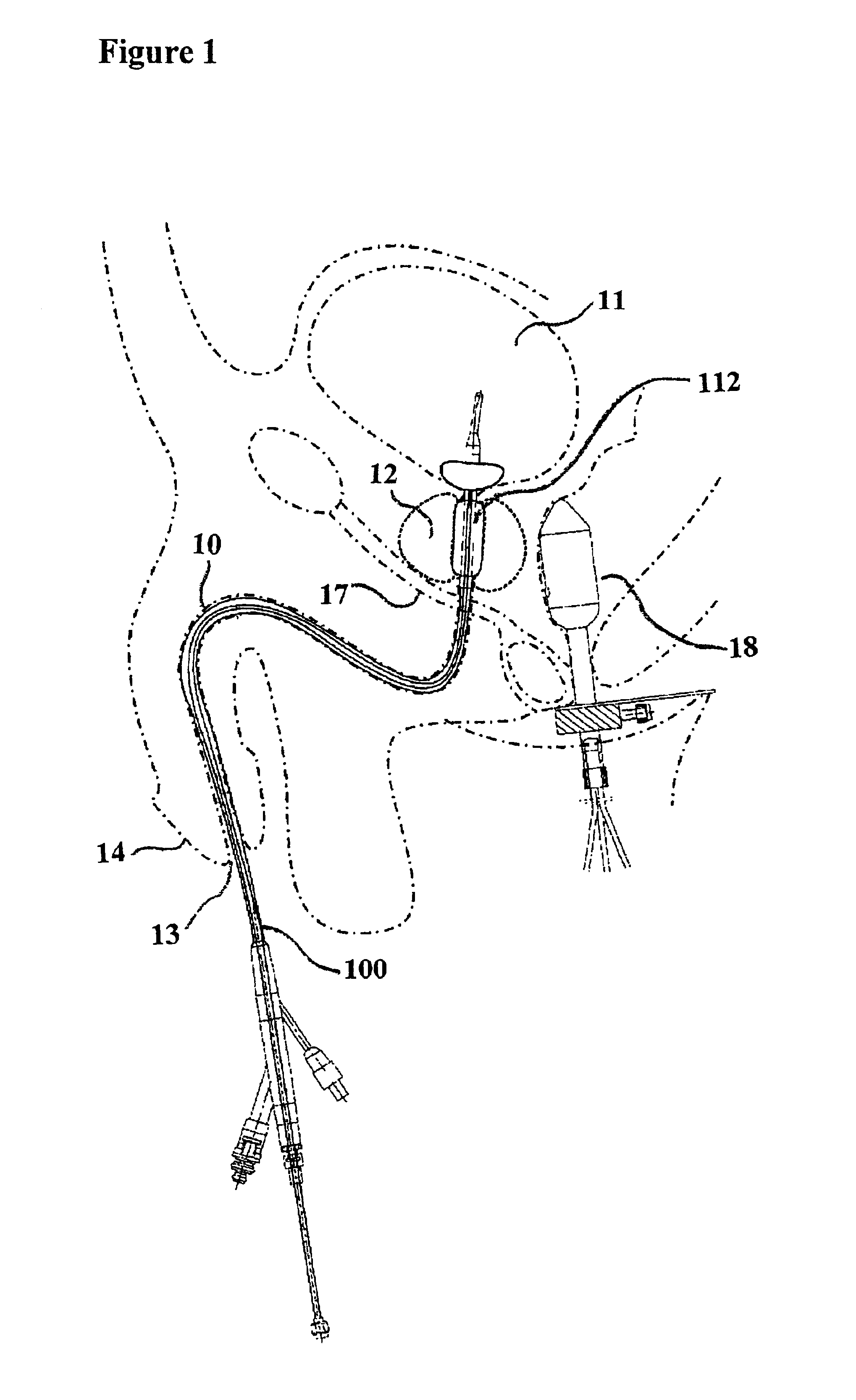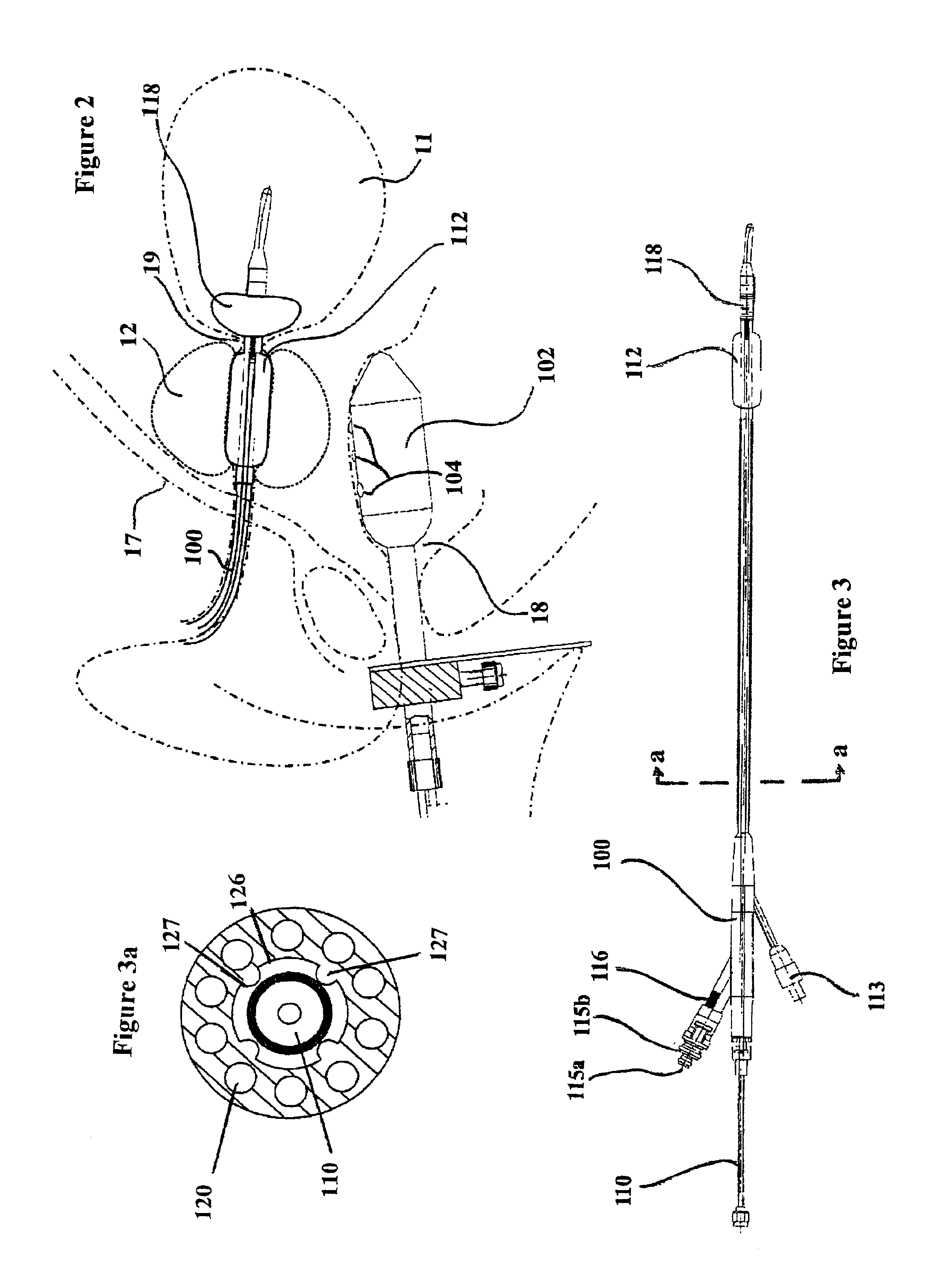Device and method for treatment of tissue adjacent a bodily conduit by thermocompression
- Summary
- Abstract
- Description
- Claims
- Application Information
AI Technical Summary
Benefits of technology
Problems solved by technology
Method used
Image
Examples
Embodiment Construction
[0029]The present invention is directed to a device and a method for thermally treating tissue adjacent a bodily conduit, such as a urethra, while preventing obstructions of the bodily conduit due to edema. Examples and alternatives of the method and apparatus according to the present invention will be described and illustrated below after a brief discussion of collagen.
[0030]Collagen is a principal component of connective tissue and fibromuscular tissues. Collagen also has known properties such as plastic remodeling when subjected to high temperatures (e.g. about 60° C. to 70° C.). Specific remodeling temperatures are generally more exactly identifiable for a type and age of tissue in a particular location of the body. In the embodiment according to the invention, Applicants theorize that the remodeling temperature is lowered as a result of the bodily conduit being reshaped and the tissue adjacent to the conduit being compressed to significantly reduce the blood flow. General princ...
PUM
 Login to View More
Login to View More Abstract
Description
Claims
Application Information
 Login to View More
Login to View More - R&D
- Intellectual Property
- Life Sciences
- Materials
- Tech Scout
- Unparalleled Data Quality
- Higher Quality Content
- 60% Fewer Hallucinations
Browse by: Latest US Patents, China's latest patents, Technical Efficacy Thesaurus, Application Domain, Technology Topic, Popular Technical Reports.
© 2025 PatSnap. All rights reserved.Legal|Privacy policy|Modern Slavery Act Transparency Statement|Sitemap|About US| Contact US: help@patsnap.com



